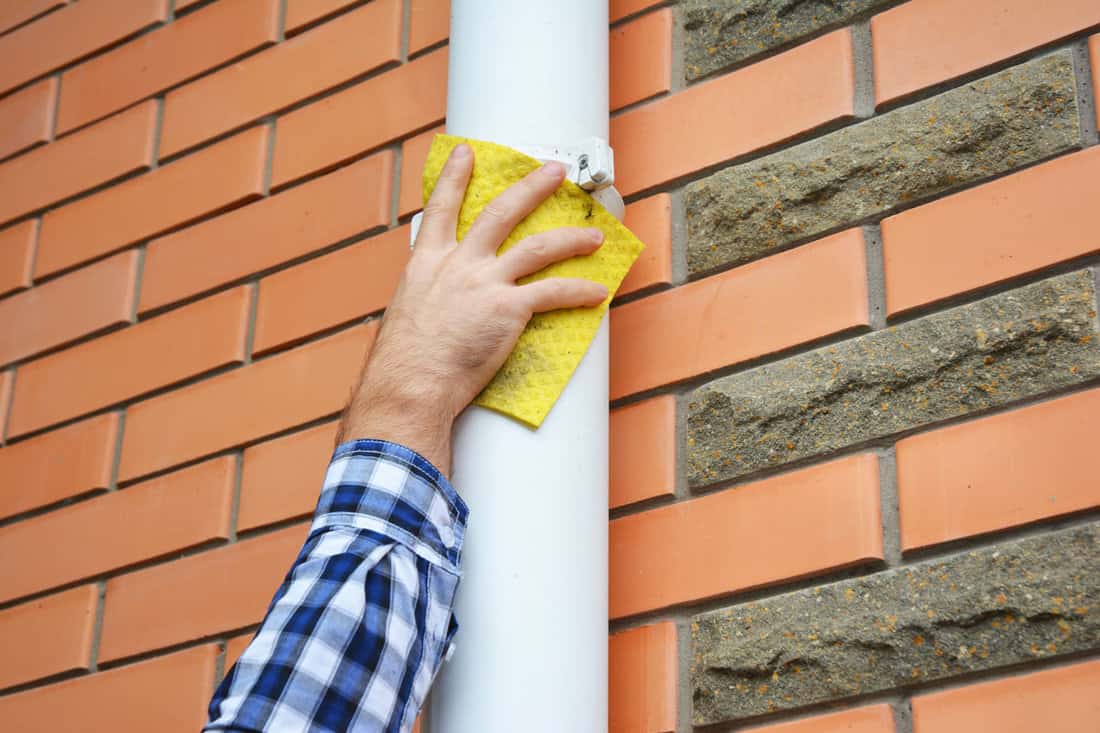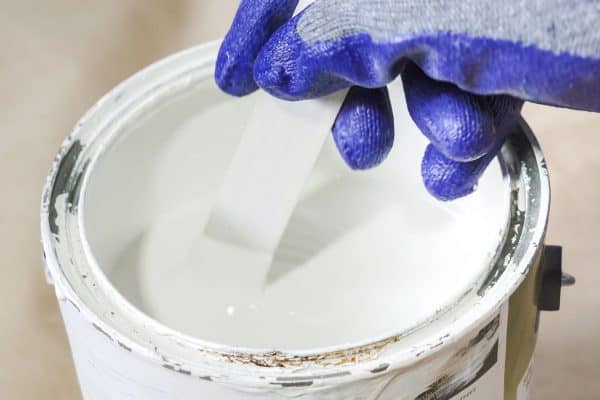You may want to paint your PVC to give it a new look, but you are unsure if you must apply a primer before painting it. We've researched this concern, and here's what we discovered.
Priming before painting your PVC is wise since it enables the paint to adhere effectively to the surface and creates a smooth and clean finish.
However, consider your preferences, the current PVC condition, and the paint you will use to make an informed decision. You can use acetone and good sanding techniques instead of a primer to make the paint stick to the PVC.
In this post, we will discuss if it is necessary to prime PVC before painting, how to apply a primer on PVC, and the best primer for PVC. So, continue reading to discover more about primer.
Do I Need To Prime PVC Before Painting?

Polyvinyl chloride piping, also known as PVC, is suitable for several projects and is an excellent outdoor material. You can use PVC for plumbing as it is tough, durable, and reasonably priced. Also, it is one of the few plastics that can withstand flames.
You can paint your PVC for a better appearance. However, applying a primer depends on your inclination, the product you will use, and the condition of your PVC.
Some paints are suited for PVC use and do not need a primer before applying. Also, paint can easily adhere to PVC that is in good condition.
Here are the advantages of using a primer on your PVC before painting:
Lets The Paint Adhere To The PVC
The traits of the material you'd like to paint greatly influence the procedure and effectiveness of the paint application.
Painting PVC often requires a little surface preparation. So, using primer ensures that your paint will adhere well to the surface of the PVC because of the firm foundation it provides.
Seals Stains
A primer acts as a sealant that can seal stains so they won't show through the paint. For this reason, you can cover surface flaws that would otherwise become easily visible if you used a lighter shade of paint without the primer.
Remember to address any issues that caused the staining before you prime over it. In the case of molds, they will not stop when you apply a primer. Deal with the mold's origin and get rid of it first.
Connects Pipes
Using a primer can assist you in preventing premature PVC connection failure by ensuring that your pipe joints are solid and leak-free. Although joints will still weld together without the primer, the bond won't be as strong.
Appearance
A primer is also essential when changing the PVC color from a very dark hue to a very light color to prevent the old color from showing and to make the new color appear closer to the shade you have chosen.
Skipping the primer can cost you more in the long run because you might need more coats to get the appropriate shade. Furthermore, the painting job may take longer.
Hides Foul Odors
Primers can hide foul odors that stick with your PVC and block them permanently.
A Guide To Painting Your PVC

We may include affiliate links and curated AI content to highlight top design styles.
It is best to prepare your PVC before painting.
Here's the step-by-step process on how to paint your PVC:
1. Gather Your Materials

Painting your PVC will be easier if you have the correct tools and are ready.
Every project's top concern is always safety. Make sure to have safety tools like gloves and mask to protect yourself from inhaling toxic elements.
Click here to see these gloves on Amazon.
Try to work in a well-ventilated area. Thus, opening your windows when working can significantly help with the airflow.
Also, set up your workspace. Put a plastic tarp where you intend to paint your PVC. This method can protect the other objects in your workspace from accessing the paint.
Click here to see these plastic tarps on Amazon.
2. Clean The PVC

Ensure that the PVC is clean and free of stains before you paint it. Wash it with water and soap to remove any dust present, then use a cloth to wipe the surface until it dries.
3. Sand The Surface

Sanding your PVC helps distribute the primer evenly when you apply it and enables the paint to stick well to its surface. It makes your exterior surface more rugged, facilitating easier color settling.
A 240-grit sandpaper is enough to sand your PVC. Avoid over-sanding the PVC, as this may result in inconsistent thicknesses that may wear out more quickly.
Click here to see this 240-grit sandpaper on Amazon.
You may also opt to use an electric sander for faster and effortless work. Do not forget to wipe the PVC with a cloth to remove any chips and flakes after sanding.
Click here to see this Ginour electric sander on Amazon.
4. Apply Your Primer

Apply a primer explicitly made for plastic on the painting surface using a paintbrush. Clean any spills immediately since removing them when they harden is more challenging.
You can mix baking soda and water to create a suitable mixture for clearing the spillage and scrape it off using a scraper. Alternatively, you can opt to sand the surface.
See this baking soda on Amazon.
Seal the primer tightly after use to prevent further solvent evaporation.
See this primer spray paint on Amazon.
5. Apply The Paint
Choose a paint color depending on your preference. Remember to check the paint label to ensure that it is suitable for plastic to guarantee that it adheres to the surface properly.
Use spray paint because it typically adheres to PVC better. Spray a mist of paint on the PVC using steady strokes, making each pass as light as possible to avoid drips.
Add more coatings as necessary. Always aim for an even and flawless finish.
See this satin black spray paint on Amazon.
6. Let Everything Dry
Allow your PVC to dry once you have achieved the coverage you desire.
Here is a visual guide for painting PVC:
What Is The Best Primer For PVC?
It is undeniable that primers are also improving as time goes by. The standard primer color is white, which is easy to notice when you apply it on surfaces.
Manufacturers also produce primers with no VOC (Volatile Organic Compounds) that can pollute the air or your body when inhaled.
An acrylic latex primer is advisable for PVC. Make sure to clean the surface before you apply your primer.
Primer handling and storage affect its lifespan. So, avoid applying too much pressure on the lid because it can deform to the point where it no longer forms an airtight seal.
Also, seal the primer when it is not in use to avoid spills and keep it from evaporating.
Click here to see this acrylic primer on Amazon.
What Can You Substitute For Primer?
You can use acetone to clean and remove any grease in your PVC, enabling the paint to adhere to the surface. Acetone is less expensive compared to primer. It is a primary component of priming fluid.
Please note that acetone is a potent substance that can sting the eyes and cause skin irritation. So, wear safety goggles and gloves when interacting with acetone to prevent chemicals from contacting your skin and eyes.
See this Onyx acetone on Amazon.
To Wrap Up

Primers save you money because you use lesser coats of paint to achieve the look you want. Remember to take care of your primer for it to last longer.
Cleaning and sanding the surface are essential before applying your primer and paint. We hope you found the information we've shared about primer helpful.
Made it to the end? Check out these helpful related articles below!
How Long To Let Primer Dry [Inc. Before Paint, Before Sanding, Before Wallpaper, Or Between Coats]













